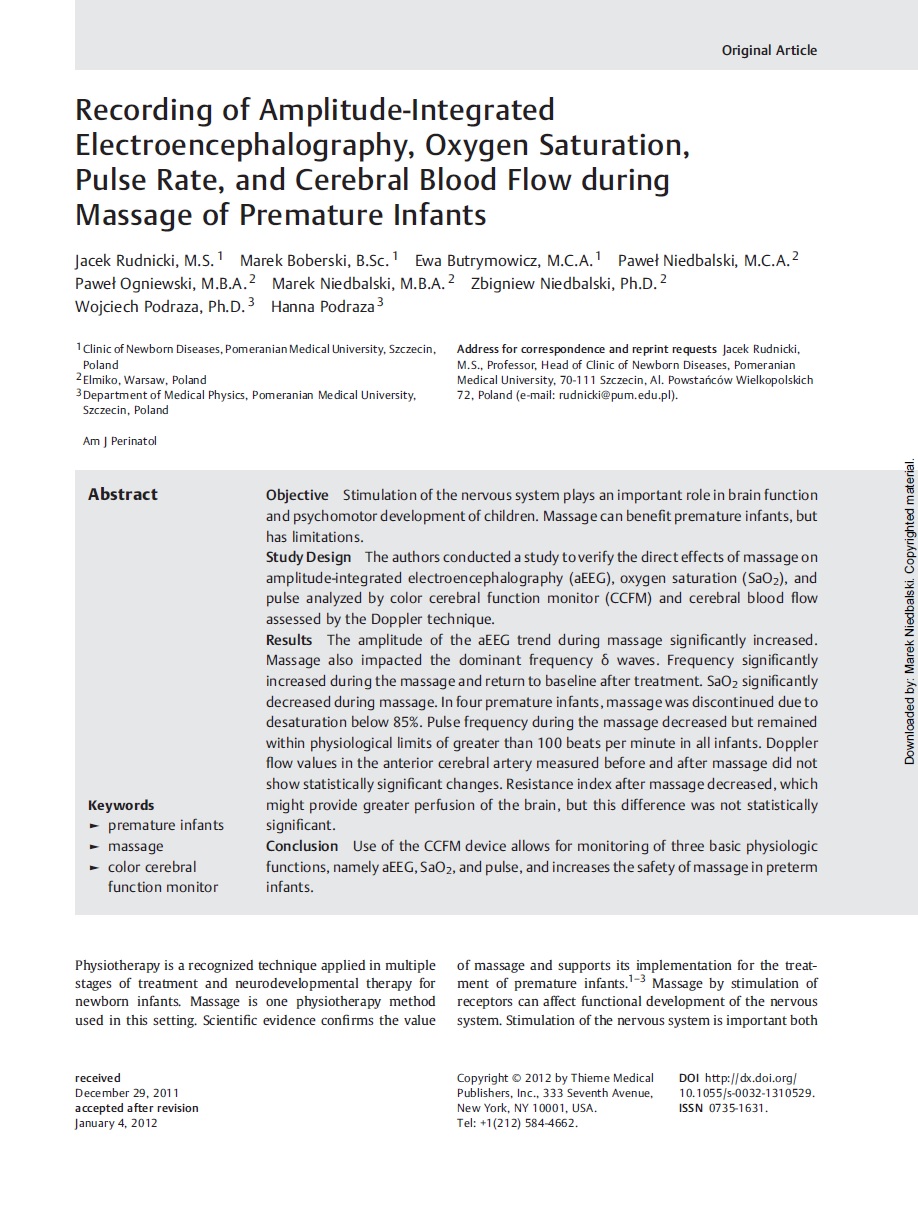Przejrzyj artykuł
 Objective:
Objective:
Stimulation of the nervous system plays an important role in brain function and psychomotor development of children. Massage can benefit premature infants, but has limitations. Study Design The authors conducted a study to verify the direct effects of massage on amplitude-integrated lectroencephalography (aEEG), oxygen saturation (SaO2), and pulse analyzed by color cerebral function monitor (CCFM) and cerebral blood flow assessed by the Doppler technique.
Results:
The amplitude of the aEEG trend during massage significantly increased. Massage also impacted the dominant frequency δ waves. Frequency significantly increased during the massage and return to baseline after treatment. SaO2 significantly decreased duringmassage. In four premature infants,massage was discontinued due to desaturation below 85%. Pulse frequency during the massage decreased but remained within physiological limits of greater than 100 beats per minute in all infants. Doppler flow values in the anterior cerebral artery measured before and after massage did not show statistically significant changes. Resistance index after massage decreased, which might provide greater perfusion of the brain, but this difference was not statistically significant.
Conclusion:
Use of the CCFM device allows for monitoring of three basic physiologic functions, namely aEEG, SaO2, and pulse, and increases the safety ofmassage in preterm infants.
Artykuł ukazał się w American Journal of Perinatology.
Autorzy: Jacek Rudnicki, Marek Boberski, Ewa Butrymowicz, Paweł Niedbalski, Paweł Ogniewski, Marek Niedbalski, Zbigniew Niedbalski, Wojciech Podraza, Hanna Podraza.



